Varicose veins are a systemic disease that can feel blood vessels in any part of the body. Its essence lies in the malfunction of the valves that control the direction of blood flow. As a result, excessive amounts of fluid accumulate in the veins, causing the walls to stretch and lose their elasticity.
Clinical picture
Dysfunction of venous blood flow is caused by damage, overload, and deformation of the valves in the perforating (connecting) veins. When the work of the deep (internal) arteries is interrupted, the blood circulation becomes chaotic, leading to it entering the surface blood vessels and forming characteristic nodes. Such defects are clearly visible to the naked eye or to the point of injury.
Varicose veins are a progressive disease with severe health complications and disabilities without timely treatment. In advanced cases of varicose veins, wounds, ulcers and blood clots can form at the site of vascular damage.
From what
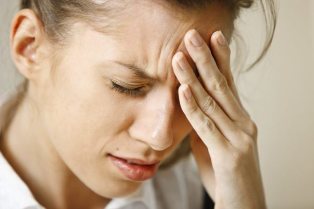
Various factors are responsible for the appearance of venous dilatation. It can be conditionally divided into major and minor. The main sources of varicose veins are
- Constant heavy physical activity;
- Long-term stay in a static position - sitting or standing;
- Adverse environmental conditions - such as persistently high air temperatures;
- Weight fluctuations or chronic obesity;
- Hormonal imbalance - during pregnancy or menopause;
- Diseases of the endocrine system;
- Hereditary and genetic predisposition manifested in features of vascular structure, namely, congenital anatomical inferiority of venous valves and weakness of connective tissue of arterial walls;
- Neuroses.
In history, varicose veins usually stimulate a complex of factors rather than one.
Tips for everyday life
For example, if you sit constantly for work, you can place a low bench under your feet. This significantly reduces the strain on the legs.
It is advisable to give up high heels. Wearing such shoes significantly limits the contraction of the calf muscles and also prevents the joints from springing. As a result, the blood simply stagnates.
A sudden change in temperature can greatly affect the filling of veins with blood. For example, when the temperature rises, the veins become very full of blood, thereby increasing the load on the valves. It is advisable to reduce the number of hot baths, sunbathe on the beach, etc. Keep in mind that the temperature drop should be gradual.
Cycling, swimming and of course the daily fast walk are very useful. It is worth remembering that you should prefer shallow water or sand when walking and avoid hard roads as much as possible. A two-minute contrast soaking of the feet helps to easily get rid of the feeling of heaviness and numbness. Moreover, this irrigation can be done with the help of a shower.
Remember that when you cross your legs, it obstructs blood flow and constricts blood vessels.
While resting, position your feet so that your heart is level. You can also raise one side of the bed slightly so your legs will be a little higher than usual.
Symptoms of the disease
Varicose veins can have many manifestations, depending on the degree of complexity of the pathology and the physiological characteristics of the patient's body. The following symptoms of vascular disease are recorded according to the stage of the varicose vein:
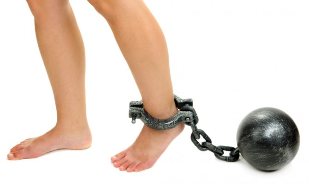
- Venous patterns or "stars" (telangiectasias) on the skin;
- Swelling of the limbs, especially at the end of the day;
- Pain in the legs or along the blood vessels when touched;
- Recurrent seizures;
- Rapid fatigue, especially when walking;
- Visual manifestation of veins on the surface of the skin;
- Feeling of heaviness in the legs;
- Burns in venous lesions;
- Muscle itching;
- Different types of aches and pains;
- Winding veins in the legs and feet;
- Dermatological changes of the skin - dryness, pigmentation, darkening;
- Development of dermatitis, eczema, and trophic disorders in the form of non-healing wounds and ulcers;
- Skin tightening at the site of varicose veins progression;
- Hematoma formation.
Symptoms may begin in adolescence. It develops unnoticed, after a while the disease has unpleasant consequences for health. If at least one of the above signs is present, an examination should be performed immediately. The phlebologist or surgeon treats the diseased veins.
Classification
At the discretion of the international scientific community, abnormal enlargement of the veins in the lower extremities is usually classified according to a special classifier, CEAP or Clinical Etiological Anatomy Pathology. Based on this typology, the varicose vein has 6 clinical stages:
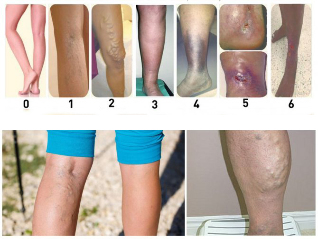
- Zero. The patient has minor subjective complaints about some of the symptoms of varicose veins, but there are still no obvious signs of the disease on visual and medical examination.
- Grade I. Small vascular networks appear on the surface of the skin, rare edema, heaviness, a burning sensation, a feeling of "humming" in the legs.
- II. degree. It is considered the starting point for true varicose veins. It is characterized by a clear external manifestation of enlarged blood vessels, the formation of venous nodes, aggravated after a long stay in a static state or walking in high heels. From this step onwards, the possibility of a thrombus formation can be observed.
- Grade III. The symptoms of the second group are accompanied by regular swelling, which is most noticeable by the end of the day, and the pulling, sore pain of the calves.
- Grade IV. There are trophic changes in the skin. Due to excessive accumulation of pigment in the epidermis, the color of the skin changes from dark brown to black. Small local inflammations can also develop in the form of redness or wet wounds that over time lead to dermal atrophy and ulcers.
- Grade V It has the same course as the fifth stage, but has healed trophic ulcers.
- VI. degree. It is characterized by severe progression with the development of non-healing wounds and ulcers.
Varicose veins are a serious disease. Without timely treatment and continuous prevention, it progresses rapidly and leads to irreversible consequences and severe consequences, even to death. 10 years from the diagnosis of varicose veins is sufficient for the pathology from stage I to stage VI.
sections
The first signs of varicose veins in the legs occur in a progressive stage when the venous valves perform less than 50% of their function. In the first or zero phase of the varicose vein, called the "compensation phase, " there are no unpleasant feelings or visible changes. The initial stage of varicose veins in the legs is detected by a thorough examination of the limbs by a phlebologist.
In the second stage of varicose veins, called "subcompensation, " the changes are pretty good:
- large veins are visible under the skin but cannot extend beyond the surface of the skin;
- a pattern of thin varicose meshes of blue or red capillaries is clearly visible on the surface of the thigh and below the knee;
- legs swell by evening;
- Calf muscles cramp at night.
This stage of varicose veins in the lower extremities is characterized by increasing symptoms that weaken after rest.
In the final stage of varicose veins, decompensation occurs: the body is unable to make up for the oxygen demand of the tissue and the valves in the veins lose 90% of their function. The condition of the limbs worsens due to insufficient blood supply. This stage of the varicose vein is characterized by a decrease in the ability of tissues to regenerate. The abundance of complications worsens the general condition of the patient. In the last stage of the varicose veins, the symptoms persist.
Male pathology
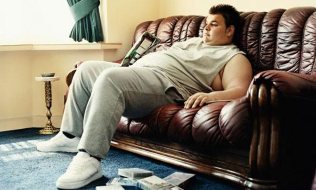
Venous pathology has no gender. However, according to the pathogenesis, the disease is traditionally divided into male and female varicose veins, each of which has specific developmental and developmental characteristics. Thus, the characteristics of male physiology do not contribute to the development of venous problems in the strong half of humanity, however, a number of factors favor this. Including:
- Heavy physical work or professional sports involving carrying or lifting a load;
- Sitting lifestyle;
- Poor nutrition;
- Genetic predisposition;
- Long-term use of hormonal drugs;
- Bad habits.
Varicose veins are more common in men after the age of 40 and include increased leg fatigue, foot pain, visible edema, venous pattern on the surface of the skin, frequent cramps and itching of the skin, such as allergic dermatitis. In some advanced cases, blood clots and vascular infections are possible. And if the disease is invisible at first, its manifestations become apparent over time. But the main changes take place within the veins, the walls of which are so weakened that exposure to any, even minor, toxic substance or infection can cause damage. The treatment for varicose veins in men is the same as in women and has no specific characteristics.
Pathology of Women
A good half of the population suffers from varicose veins more often than men. The benefits of this are:
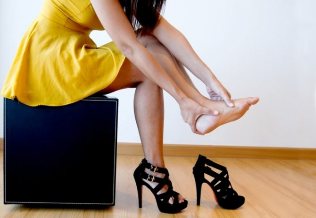
- Wearing high heels or shoes that do not fit the size and fullness of your feet;
- Slim or too tight clothing that interferes with blood circulation;
- Work that recovers all day - salesman, receptionist, hairdresser, teacher, cook, etc. ;
- Hormonal changes due to pregnancy, childbirth and age-related body changes (menopause);
- Weight experiments - frequent fluctuations in body weight, extreme diets for dramatic weight loss, uncontrolled excess set.
Women are common patients of phlebologists and cosmetologists. In order to preserve the aesthetic appearance of the skin for as long as possible, women have a greater responsibility in the treatment of varicose veins than men and achieve a visible improvement in the clinical condition of the arterial system.
Due to the increased natural tendency to varicose veins, symptoms such as swelling of the legs, excessive tiredness of the legs, itching and burning sensation, small blood vessels and venous pattern should seriously alert a woman and require immediate medical attention.
Treating varicose veins with folk remedies
When studying the presented disease, do not panic, because with proper and timely treatment, the varicose vein practically heals.
Why in practice? Because after certain actions, including preventive methods, after the completion of the disease, the disease may reappear and cause no less problems than it was originally.
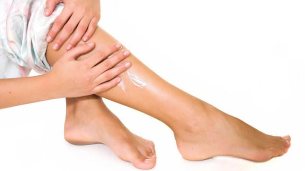
How do we treat varicose veins quickly and painlessly? You should turn to traditional medicine.
Infusions and tinctures
Above all, the disease must be treated from within. To do this, you need to prepare infusions or tinctures using natural products, herbs and other ingredients that improve blood circulation. Some of them can be cured here:
- Nettle. Dry and grind the grass in any convenient way. To prepare the infusion, pour 2 tablespoons of the plant component with a glass of boiling water. The contents are kept for one hour and filtered. Then drink legalább glasses at least three times a day. The course lasts for six months at one-month intervals. Horse chestnuts. Put the crushed horse chestnut seeds in half in a three-liter bottle and pour vodka or alcohol to the edge of the pot. Within a month, the dish is kept in a dark place, shaking its contents regularly. After the time has elapsed, you can start rubbing your feet with the resulting tincture. Perform such procedures 2-3 times a week without interruption.
Treating varicose veins at home with folk remedies involves the use of any herb that can improve the blood circulation in the human body.
For apple varicose veins
Apples have an excellent healing effect. Here you can use the fruits in pure form and as an additive to other products.
How to get rid of varicose veins with apples:
- Prepare the apple infusion. To do this, soak the apples in hot water in a volume of 1 liter for 4 hours. Then pass the fruit through a grinder or sieve, mixing it with the water in which the soaking was done. Squeeze the water out of the mixture and take 50 g twice a day.
- Varicose apple cider vinegarcan be used as a rub or inside. For the treatment, it is enough to rub a small amount of vinegar overnight on the problem areas. You can also use diluted vinegar with a little honey, half an hour before a meal drank вып cup.
Be careful when using dilute vinegar internally. This method is contraindicated in patients with gastrointestinal disease.
Treatment of varicose veins at home, video:
Disease Diagnostics
Special research methods are used to accurately diagnose varicose veins and determine their severity. The standard test scheme for contacting a phlebologist consists of the following procedures:

- Gathering a medical history that identifies potential risk factors and causes;
- Visual examination of the patient with change of last position and palpation of venous lesions;
- Laboratory blood test;
- Ultrasound color duplex sonography of the arteries of the lower extremities, which allows the correct medical opinion to be performed, the speed and direction of blood flow to be measured, the movement to be mapped, and a characteristic and clear image of the blood vessels to be taken;
- Using a vascular X-ray (phlebography) contrast agent to determine the appearance and shape of veins, the functionality of valves, and the direction of blood flow.
Often, these research methods are sufficient to determine the exact clinic, but in some cases, additional diagnostic methods are used:
- 3D CT (computed tomography) with phlebography;
- Using photoplethysmography, a photoresistor or a phototransistor using infrared and light radiation;
- Phleboscintigraphy based on the use of radionuclide isotopes and dynamic examination of venous pressure in the lower extremities by phlebomanometry;
- Lymphoscintigraphy, which shows the status and extent of changes in the lymph nodes.
The need for a particular diagnostic method is determined by the physician based on the complexity of the situation and the patient's individual clinical parameters.
The timely and well-chosen research method makes it possible to determine the position of the superficial and deep veins and to develop an accurate therapeutic regimen according to the indicators.
Conservative treatment
In the initial stage, the varicose vein is reversible and disappears completely with a responsible approach to treatment. In other cases, conservative therapy is used to combat varicose veins using medications, intravenous correction agents, and special compression underwear. Each of these types of treatments has its own indications for appointment and the specifics of the effect on the patient's organ.
- Treatment. Phlebotropic drugs - phlebotonics, anticoagulants and antioxidants - are used orally for a period of time to help strengthen blood vessels and reduce their fragility, better dilute the blood and normalize blood flow, and remove accumulated toxins from the body. For topical treatment, tonics, analgesic, soothing and swelling gels and ointments are used. In addition, B, A, K, etc. are added to the therapeutic complex. Group vitamins are introduced. The duration of treatment is decided based on the results of the diagnosis and the nature of the dynamics of the disease.
- Arterial sclerotherapy. The method involves the use of special drugs to glue the vein affected by the vein from the inside. As a result, reflux is stabilized and occurs through healthy vessels. The procedure is performed invasively by intravenous administration of a solution. It is prescribed for a certain condition of the blood vessels and for small venous nodules.
- Ozone therapy. This is part of cosmetology medicine and consists of exposing the interior of the container to cold ozone to bond the defect site. The method is also actively used to remove non-aesthetic vascular networks from the skin surface. It is effective in the early stages of the disease. Only a few procedures are enough to achieve the desired result.
- Compression therapy. It consists of wearing special medical underwear that puts varying intensities of pressure on different parts of the legs, which in turn helps to reduce the load on the veins and restore blood circulation. Constant use of corrective underwear protects blood vessels from stretching and thrombosis. Depending on the purpose, compression underwear can be prophylactic (minimal compression force), medical (can only be worn during exacerbation of venous disease) and hospital (used in the postoperative period in hospital). Available in stockings, stockings, knee-length and elastic bandages. The selection of compression underwear is done only on the recommendation of a doctor
Surgical methods of affecting varicose veins
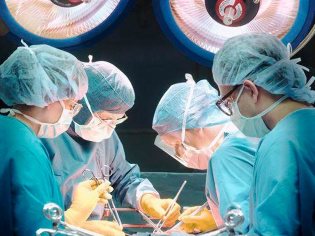
Varicose vein surgery is performed only as a last resort when a deep vein lesion is diagnosed that is exacerbated by its complications. Indications for assigning surgery are as follows:
- Noticeable exacerbation of pathology;
- Development of thrombophlebitis;
- Visible enlargement of saphenous vessels;
- Severe swelling and fatigue of the lower extremities;
- Abnormal reflux disorder.
Surgery under general anesthesia using modern surgical techniques such as:
- Radio frequency destruction of blood vessels. Restoration of venous structure using internally disposable catheters and radio wave generators.
- Endovenous Thermal Steam Impulse Occlusion (SVS). Effect of abundant flow of heated steam on vessels. It allows it to penetrate the most inaccessible areas of the venous bed and directly affects the deformed blood vessels.
- Laser coagulation of veins. This includes the use of a laser beam directed at the patient's vein. The procedure leaves no cuts, burns or scars.
- Venaseal technique. This consists of gluing the valves of the vessels with a special biological adhesive.
- Varadi method. The most difficult method of treatment, which involves removing the affected vessel. Due to its 100% efficiency, it is one of the preferred methods of neurosurgery.
Despite the high efficacy of surgical treatment, it is often combined with conservative therapies. This approach allows you to accelerate the healing process and reliably consolidate the result.
Self-massaging the legs from varicose veins
- The thighs should be massaged first. Also, rise from the area of the knee to the area of the groin with light stroking and kneading. Stretch the knee joint with your fingers in a spiral, straight and circular motion. Press the popliteal fossa several times with your fist and knead this area in a circular motion.
- Lie on your back, relax your muscles and bend your knees. Grasp the leg with your hand and rub the skin with a stroke. Shake your leg muscles.
- Stretch both toes with light movements. Rub the ankle and both feet from the bottom up. Massage your legs and heels in a circular motion and rub your ankles with a little force.
Repeat this whole self-massage complex 2-3 times.
Rehabilitation period
During the recovery period and in the future, a competent rehabilitation program, including periodic drug therapy, as well as adherence to the rules of a healthy lifestyle and the implementation of therapeutic practices, will help in the fight against varicose veins in the lower extremities.
In addition to sanatorium physical education, a patient diagnosed with varicose veins, regardless of the stage of development and duration of rehabilitation, should wear corrective medical underwear to improve blood circulation and prevent blood stagnation in the veins.
Nutrition for Varicose Veins
Diet is very important in this disease. The diet should include the following foods:
- paprika;
- carrots;
- white cabbage;
- citrus fruits;
- apple;
- nuts;
- rosehip; redcurrant;
- sea fish;
- eggs;
- lean meat;
- legumes
- cereals;
- cheeses;
- May
Varicose veins in the lower extremities include the rejection of such products:
canned- ;
- semi-finished products; muffins and cakes;
- caffeinated beverages;
- smoked meats;
- pickled foods;
- jelly meat;
- chicory;
- alcoholic beverages.
Prevention
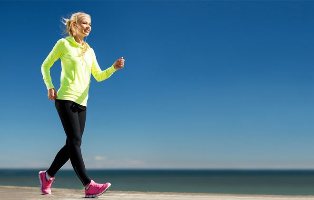
Your health should be monitored from a young age to prevent lower limb varicose veins. Preventing the disease is more effective than treating the feet when complications develop.
Sufficient physical activity should be provided for good blood circulation. If the person at work remains in the same position for a long time, do a little warm-up regularly. You need to approach your shoe selection responsibly - it should be with a small heel (up to 6 cm), be comfortable, not squeeze your feet.
The weight must be checked. Being overweight is one of the predisposing factors for the development of the disease. It also leads to increased stress on the blood vessels. Clothes should be made of natural fabrics. Avoid using underwear that is too tight to avoid pinching large blood vessels in the lumbar region.
It is advisable to use a shower during hygienic procedures, which allows you to change the pressure and temperature of the water. Thanks to these tricks, you can give volume, activate blood flow.
Daily exercise or exercise is appropriate. It is not necessary to run several kilometers at once, it is enough to visit the pool, walk or cycle for pleasure.
Before using hormonal contraceptives, you should consult not only a gynecologist but also a phlebologist and test your hormones. If you change the levels of female hormones in the blood, it can adversely affect the condition of the blood vessel wall.












































